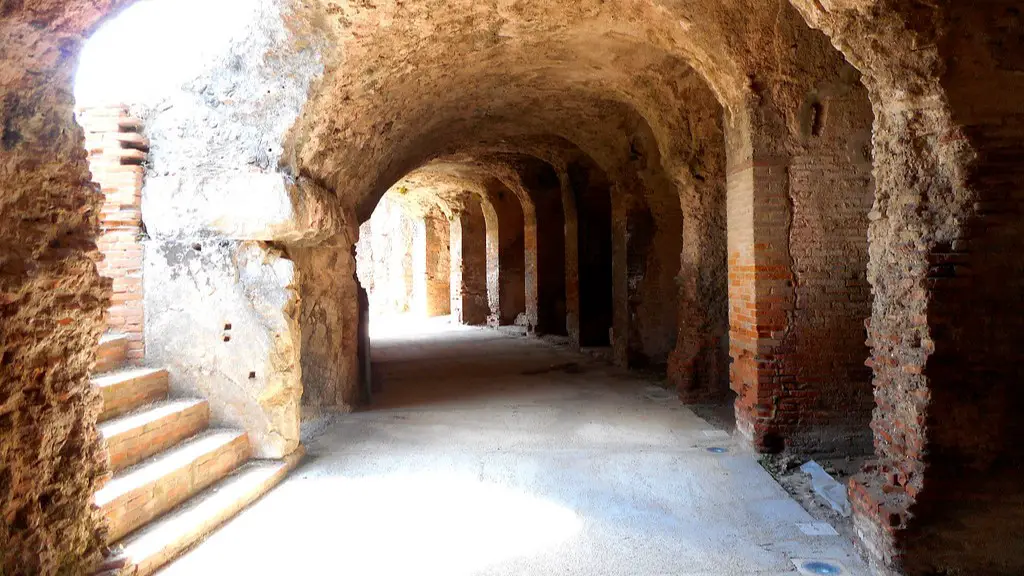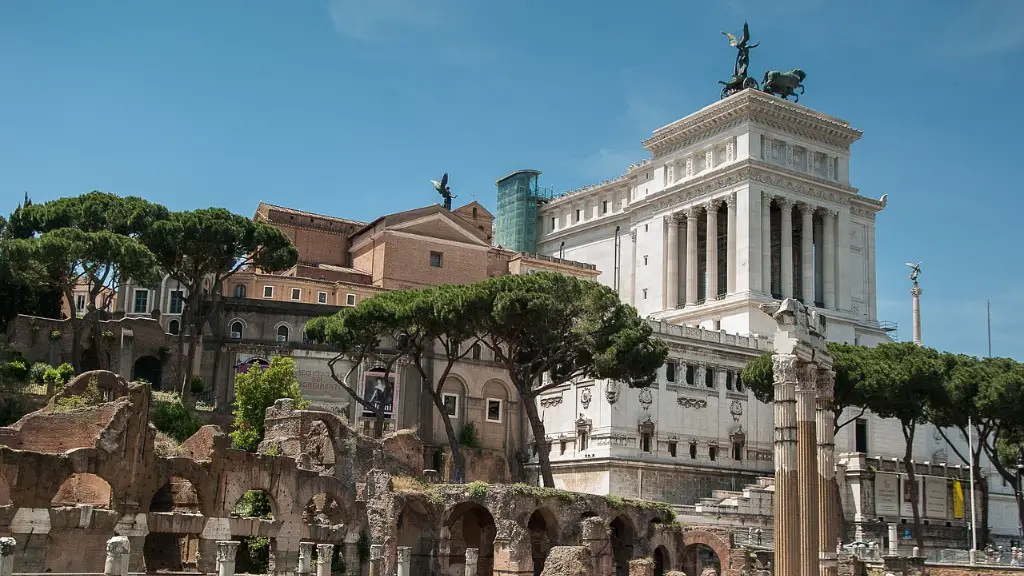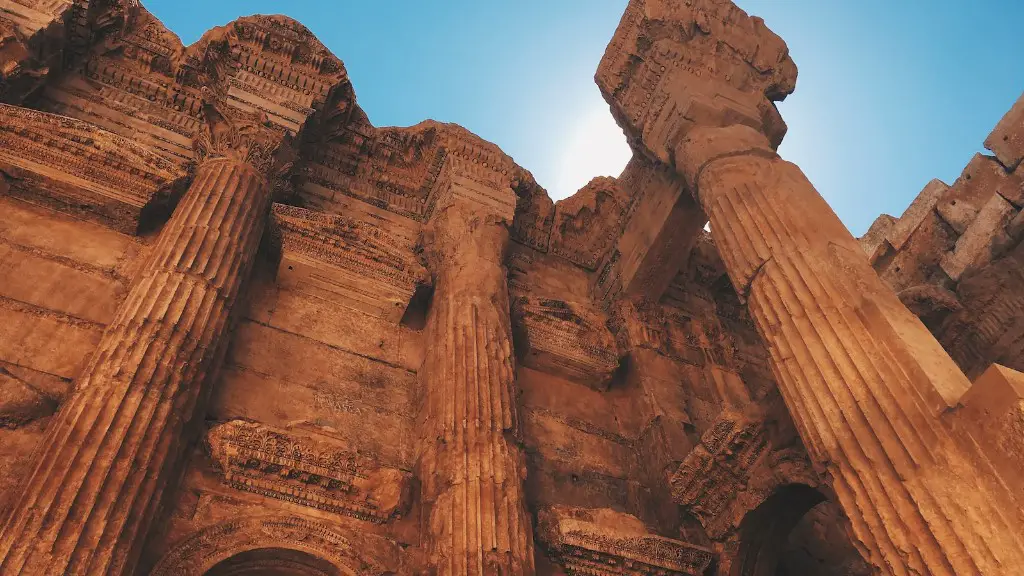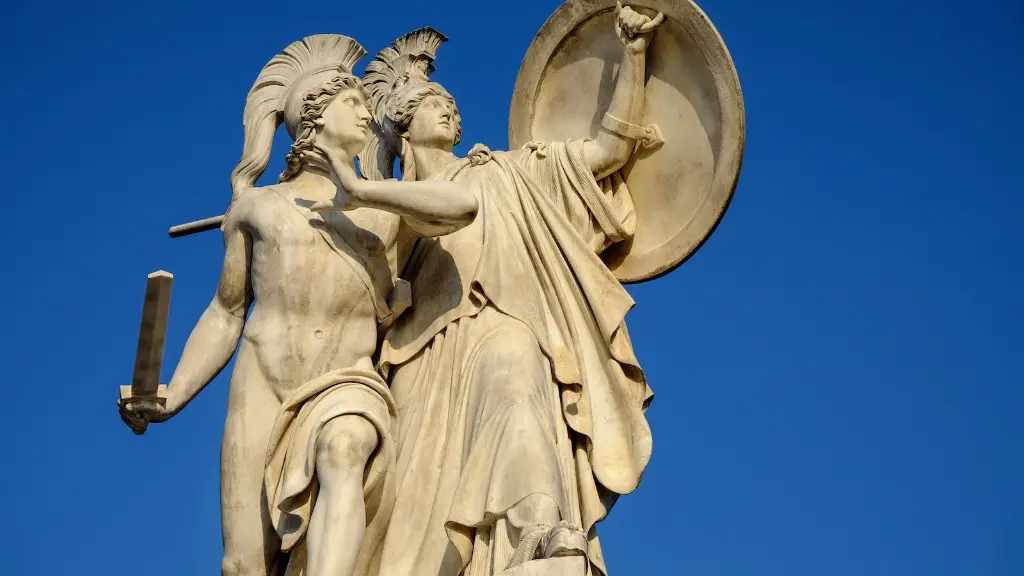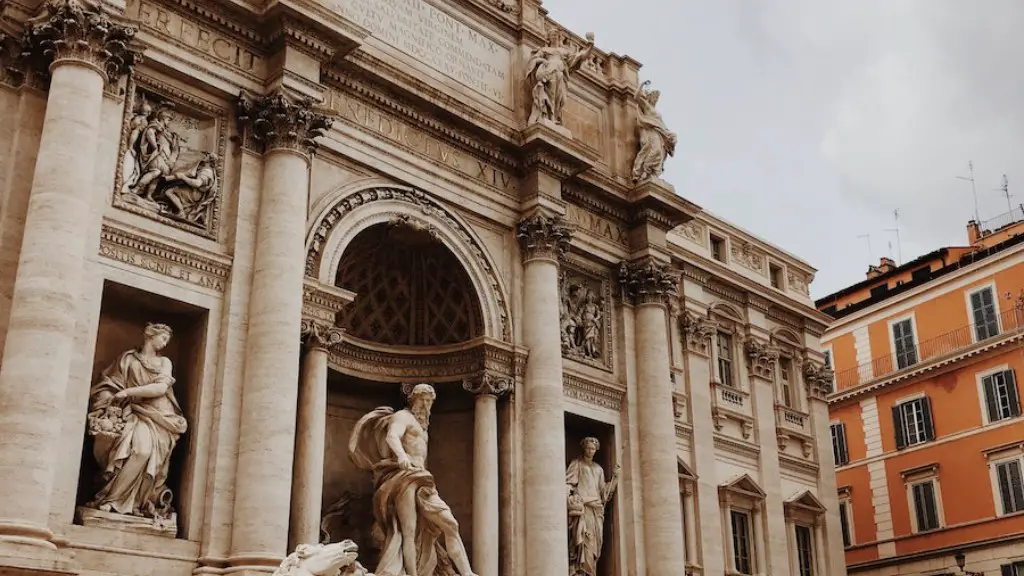Religion in Ancient Rome
Religion was a central part of life for Ancient Romans. The Roman Empire worshiped gods related to their own lifestyle and customs, with temples built to honor their gods or emperors often built in even their own houses. Ancient Romans believed in an afterlife, which they believed was just a continuation of physical life in some form, and often prayed to the gods to help them live full and long lives. By the second century, Ancient Roman religion had been heavily influenced by Greek mythology.
The Roman religion was polytheistic, with many gods being recognized with certain responsibilities and roles. The two most important gods to worship in Ancient Rome were Jupiter, who was the ruler of the gods, and Mars, the god of war. The goddess of love and marriage, Venus, was also highly popularly worshiped in Ancient Rome. Other gods that were widely worshiped included Ceres, the goddess of the harvest, and Mercury, the messenger god.
There were also many different cults and mystery religions that Ancient Romans believed in and practiced. Some of these cults, such as the Cult of Isis, involved a more mystical and magical aspect than traditional Roman religion, and often involved rituals and sacrifices. Another popular religion practiced in Ancient Rome was Mithraism, which originated from Persia and was adopted by the Roman Army.
Many important aspects of the Ancient Roman government were based on religion. The main leader of the government was the Emperor, who was considered to be a deity or the mouthpiece of the gods. The Senate was comprised of high-ranking religious officials, and even the army was tasked with protecting the gods. As a result of this aspect of their government, the Ancient Romans were very religiously devoted to their gods and participated in many religious rituals, festivals and ceremonies.
Social Structure in Ancient Rome
Life in Ancient Rome was based on a hierarchical social structure of patricians, plebeians, slaves and freedmen. Patricians were members of the wealthiest and most influential class in Rome, and were considered citizens with full rights. Plebeians, on the other hand, were the common people of Rome and did not have the same privileges as the patricians. Slaves and freedmen were of the lowest social tier in Ancient Rome and did not have any rights.
Patricians enjoyed several privileges over the other classes of society, including access to higher education and official positions in the government. Plebeians were mostly farmers, artisans and laborers, and were expected to pay taxes. Slaves were bought and sold, often by wealthy patricians, and were used primarily for manual labor. Freedmen were former slaves who had obtained their freedom, but they were still considered to be of a lower class than patricians.
Although there was a clear division between the classes of Ancient Rome, there was also some level of mobility between them. Slaves who were freed were still considered to be of a lower class than patricians, but they were also given certain rights and were allowed to participate in social and political activities. Similarly, plebeians had more opportunities to climb the social ladder than slaves or freedmen, as some of the most successful merchants and traders were from the plebeian class.
Economics of Ancient Rome
The economy of Ancient Rome was largely based on slavery and commerce. Slaves were used for manual labor, as well as running businesses and doing other tasks. They were especially important in the agricultural sector, where they worked on large estates owned by wealthy patricians. There were also many merchants and traders who bought and sold goods in the markets, and there were even financial services and banking activities in the empire.
The economy was heavily regulated by the government, and taxes were always collected on goods and services. Those who were wealthy were expected to pay higher taxes, while the lower classes had to pay less. This system allowed the government to fund its many projects and activities, including its ongoing wars against other empires and its public works.
The Ancient Romans also had a currency that was based on gold and silver. This system allowed people to easily buy and sell goods, as well as trade between other countries. Coins from Ancient Rome can still be found today, giving insight into the economic system of the time.
Entertainment in Ancient Rome
Entertainment was an important part of life in Ancient Rome. People of all classes enjoyed various forms of entertainment, including plays and theatrical performances, public festivals, chariot racing and gladiator games. Most forms of entertainment were free of charge, and people gathered in public places to enjoy them.
The most popular form of entertainment was the gladiator games, which were held in large arenas and often drew in thousands of spectators. Gladiators were usually slaves, prisoners of war or even volunteers, who were trained to fight each other in a variety of methods. The fights were often gruesome and bloody, and the victor was often awarded a prize.
Other forms of entertainment included theatrical plays, which were often performed in large amphitheaters. People of all classes gathered to watch plays, which often told stories from mythology and other myths. Public festivals were popular as well, and included parades, processions, and musical and athletic competitions.
People also enjoyed various forms of music, such as singing and playing instruments. String and wind instruments were popular, and many songs and hymns were written in Ancient Rome. Music and poetry were especially popular among the upper classes, and many wealthy patricians hosted musical gatherings and symphonies in their homes.
Architecture of Ancient Rome
Ancient Rome was renowned for its beautiful and innovative architecture. The most famous example is the Colosseum, the world’s largest amphitheater, which was constructed in the first century AD. This impressive structure is still standing today, and it’s testament to the architects of Ancient Rome.
Other examples of Ancient Roman architecture can be found in the many temples and monuments that were built around the empire. Temples were often built to honor the gods and other important figures, and were decorated with beautiful sculptures, engravings and mosaics. The Pantheon is another notable example of Ancient Roman architecture, which was the largest domed building in the world for many centuries.
The Romans were also renowned for their public works projects, such as roads and aqueducts. Unlike many other civilizations of the time, the Ancient Romans used arches and advanced engineering techniques to build their structures, which allowed them to stand strong for many centuries. Even today, many of these bridges and roads remain standing as a testament to Roman engineering.
Government in Ancient Rome
The Roman Republic was the form of government during the period of Ancient Rome. It was comprised of two ruling bodies, the Senate and the Assembly, and was designed to provide a balance of power between the citizens and the government. The Senate was composed of wealthy patricians and other high-ranking members of society, and had the power to propose and pass laws. The Assembly was made up of elected officials from the lower classes, and had the power to accept or reject laws proposed by the Senate.
The Senate was also in charge of foreign policy, and led Rome’s many wars against other empires. The Assembly had the power to elect the leader of the government, who was the Emperor. The Emperor had the power to veto laws, appoint generals and grant pardons to criminals. In short, the Emperor was the chief executive of the Roman Republic and held much of the power in the government.
The Ancient Romans also had a system of courts and judges that oversaw civil and criminal cases. These courts were divided into three tiers, with each tier having a different degree of authority and responsibility. The death penalty was common in Ancient Rome, but there were also other forms of punishment, including flogging, confiscation of property and exile.
Law in Ancient Rome
Ancient Rome had a complex legal system that was designed to ensure justice and fair treatment. Most laws were based on civil law, which emphasized the rights of citizens and focused on resolving disputes between individuals. Other laws dealt with criminal activities, such as theft and murder, and gave punishments for those who were found guilty of such crimes.
The legal system was administered by a group of people known as the “Pontifices”, who were responsible for interpreting the law and ensuring that the punishments for those who were found guilty of committing a crime were appropriate. The Pontifices also had the power to pardon those who had been convicted of a crime, provided that the case was considered to be unjust or that the person had been falsely accused.
The law in Ancient Rome also gave special rights and privileges to certain classes of citizens, with wealthy patricians having more rights than anyone else. They had the right to own property, to vote, and to sue in a court of law. The lower classes had fewer rights and could not participate as fully in the legal system.
Education in Ancient Rome
Education was highly valued in Ancient Rome, and only lower-class children received formal schooling. The wealthy patrician children usually had private tutors, while the plebeian children went to public schools. Schools taught basic topics such as reading, writing, geometry and arithmetic.
Higher education was only available to the wealthy patricians, who had access to private tutors or attended private universities or academies. These schools focused on teaching philosophy, rhetoric and other advanced forms of education. Some of the most famous Roman scholars were educated in these private universities, including Cicero and Seneca.
A great emphasis was placed on the education of girls in Ancient Rome. Girls were expected to be educated in Roman culture and the Latin language, as well as reading, writing and basic mathematics. Girls from wealthy families were also taught the Greek language and philosophy, which was considered to be highbrow knowledge at the time.
Conclusion
Life in Ancient Rome was filled with many complex social structures, laws, religious practices, and educational institutions. It was a time of incredible innovation and progress, as well as strife and struggle. Although the Roman Empire eventually fell, its legacy is still felt in many parts of the world today, from architecture and public works projects, to the language and laws that still govern us.
